
How to Use 12v5ah Battery: Examples, Pinouts, and Specs
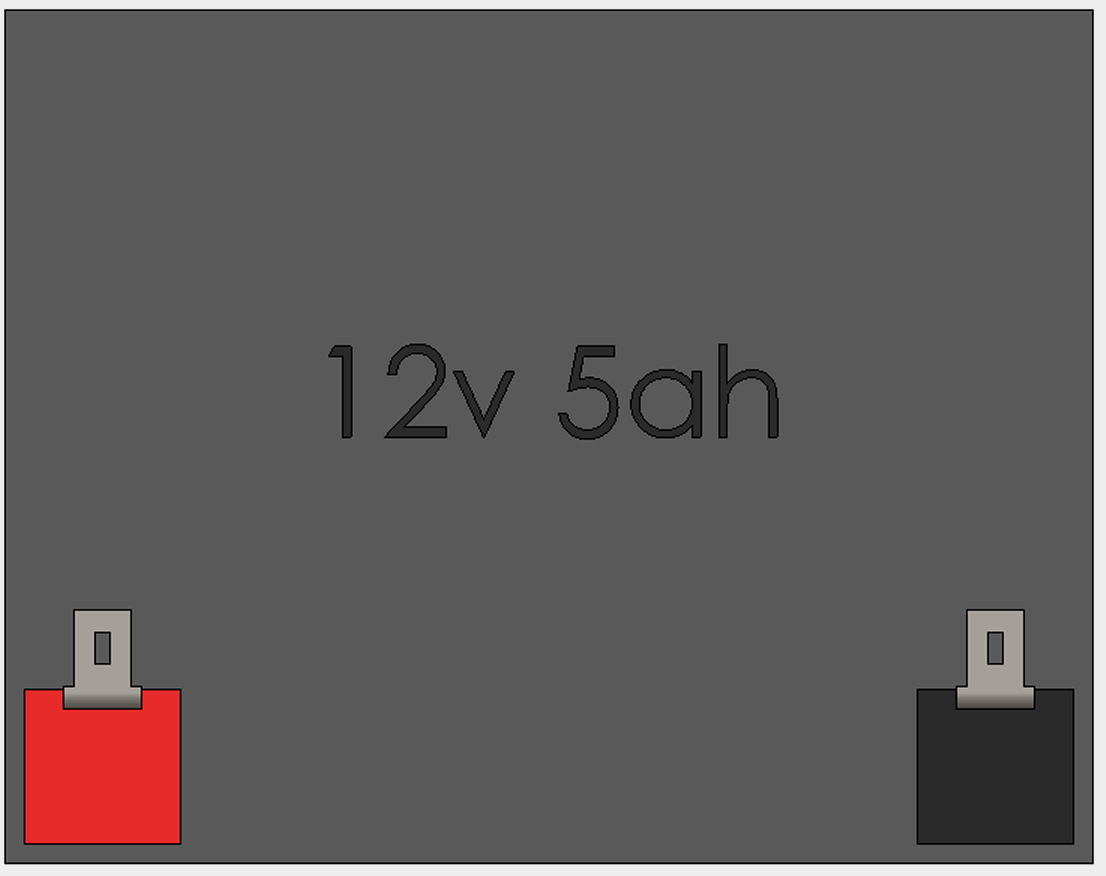
 Design with 12v5ah Battery in Cirkit Designer
Design with 12v5ah Battery in Cirkit Designer12V 5Ah Rechargeable Battery Documentation
1. Introduction
The 12V 5Ah Rechargeable Battery is a sealed lead-acid (SLA) or lithium-ion battery designed for reliable and efficient energy storage. With a nominal voltage of 12 volts and a capacity of 5 ampere-hours (Ah), this battery is widely used in applications requiring moderate power over extended periods. Its compact size and rechargeable nature make it ideal for backup power systems, electric vehicles, portable devices, and small-scale renewable energy setups.
Common Applications:
- Uninterruptible Power Supplies (UPS): Provides backup power during outages.
- Electric Vehicles: Powers small electric scooters, bikes, and carts.
- Portable Devices: Supplies energy to portable tools, medical devices, and lighting systems.
- Renewable Energy Systems: Stores energy from solar panels or wind turbines.
- Hobby Projects: Powers DIY electronics, robotics, and Arduino-based systems.
2. Technical Specifications
The following table outlines the key technical details of the 12V 5Ah battery:
| Parameter | Specification |
|---|---|
| Nominal Voltage | 12V |
| Capacity | 5Ah (5000mAh) |
| Chemistry | Sealed Lead-Acid (SLA) or Lithium-Ion |
| Maximum Charging Voltage | 14.4V - 14.7V (SLA) / 12.6V (Li-ion) |
| Discharge Cutoff Voltage | 10.5V (SLA) / 9.0V (Li-ion) |
| Maximum Discharge Current | 10A (continuous) |
| Operating Temperature | -20°C to 50°C |
| Dimensions (LxWxH) | ~90mm x 70mm x 100mm |
| Weight | ~1.5kg (SLA) / ~0.8kg (Li-ion) |
| Terminal Type | F1/F2 Faston Tabs or Screw Terminals |
Pin Configuration and Descriptions
The 12V 5Ah battery typically has two terminals:
| Terminal | Description |
|---|---|
| Positive (+) | Connects to the positive side of the circuit. |
| Negative (-) | Connects to the negative side of the circuit. |
3. Usage Instructions
Connecting the Battery in a Circuit
- Identify the Terminals: Locate the positive (+) and negative (-) terminals on the battery.
- Use Proper Connectors: Use F1/F2 faston connectors or screw terminals to ensure a secure connection.
- Polarity Check: Always connect the positive terminal to the positive side of the circuit and the negative terminal to the ground or negative side.
- Fuse Protection: Add a fuse in series with the positive terminal to protect the circuit from overcurrent.
- Charging the Battery:
- Use a compatible charger with the correct voltage and current ratings.
- For SLA batteries, charge at 14.4V - 14.7V with a current limit of 1A to 2A.
- For lithium-ion batteries, charge at 12.6V with a current limit of 1A.
Important Considerations:
- Avoid Overcharging: Overcharging can damage the battery and reduce its lifespan.
- Discharge Limits: Do not discharge below the cutoff voltage (10.5V for SLA, 9.0V for Li-ion).
- Temperature Range: Operate the battery within the specified temperature range to prevent damage.
- Storage: Store the battery in a cool, dry place when not in use. Recharge periodically to prevent deep discharge.
4. Example Application with Arduino UNO
The 12V 5Ah battery can be used to power an Arduino UNO through a voltage regulator or a DC-DC converter. Below is an example of how to connect the battery to an Arduino UNO using a 12V-to-5V DC-DC converter.
Circuit Diagram:
12V Battery (+) ----> DC-DC Converter Input (+) ----> Arduino 5V Pin
12V Battery (-) ----> DC-DC Converter Input (-) ----> Arduino GND Pin
Sample Code:
The following Arduino code reads the battery voltage using a voltage divider and displays it on the serial monitor.
// Define the analog pin connected to the voltage divider
const int voltagePin = A0;
// Voltage divider resistor values (in ohms)
const float R1 = 10000.0; // Resistor connected to battery positive
const float R2 = 1000.0; // Resistor connected to ground
void setup() {
Serial.begin(9600); // Initialize serial communication at 9600 baud
}
void loop() {
int rawValue = analogRead(voltagePin); // Read the analog value
float voltage = (rawValue / 1023.0) * 5.0; // Convert to voltage (0-5V)
// Calculate the actual battery voltage using the voltage divider formula
float batteryVoltage = voltage * ((R1 + R2) / R2);
// Print the battery voltage to the serial monitor
Serial.print("Battery Voltage: ");
Serial.print(batteryVoltage);
Serial.println(" V");
delay(1000); // Wait for 1 second before the next reading
}
Notes:
- Use a voltage divider to scale down the 12V battery voltage to a range readable by the Arduino (0-5V).
- Ensure the resistors in the voltage divider are rated for the power they will dissipate.
5. Troubleshooting and FAQs
Common Issues and Solutions:
| Issue | Possible Cause | Solution |
|---|---|---|
| Battery not charging | Faulty charger or incorrect voltage | Verify charger output and connections. |
| Battery discharges too quickly | Overload or aging battery | Reduce load or replace the battery. |
| Arduino not powering on | Incorrect wiring or insufficient voltage | Check connections and use a DC-DC converter. |
| Overheating during charging | Overcharging or high ambient temperature | Use a charger with proper voltage/current ratings. |
FAQs:
Can I connect the battery directly to the Arduino UNO?
- No, the Arduino UNO operates at 5V. Use a DC-DC converter to step down the 12V to 5V.
How long will the battery last on a full charge?
- The runtime depends on the load. For example, a 1A load will last approximately 5 hours (5Ah ÷ 1A).
Can I use this battery for solar power storage?
- Yes, it is suitable for small-scale solar systems. Use a charge controller to manage charging.
How do I know when the battery is fully charged?
- For SLA batteries, the voltage stabilizes at 14.4V - 14.7V. For lithium-ion, it stabilizes at 12.6V.
This documentation provides a comprehensive guide to using the 12V 5Ah rechargeable battery effectively. Whether you're powering an Arduino project or a backup system, following these guidelines will ensure safe and efficient operation.
Explore Projects Built with 12v5ah Battery
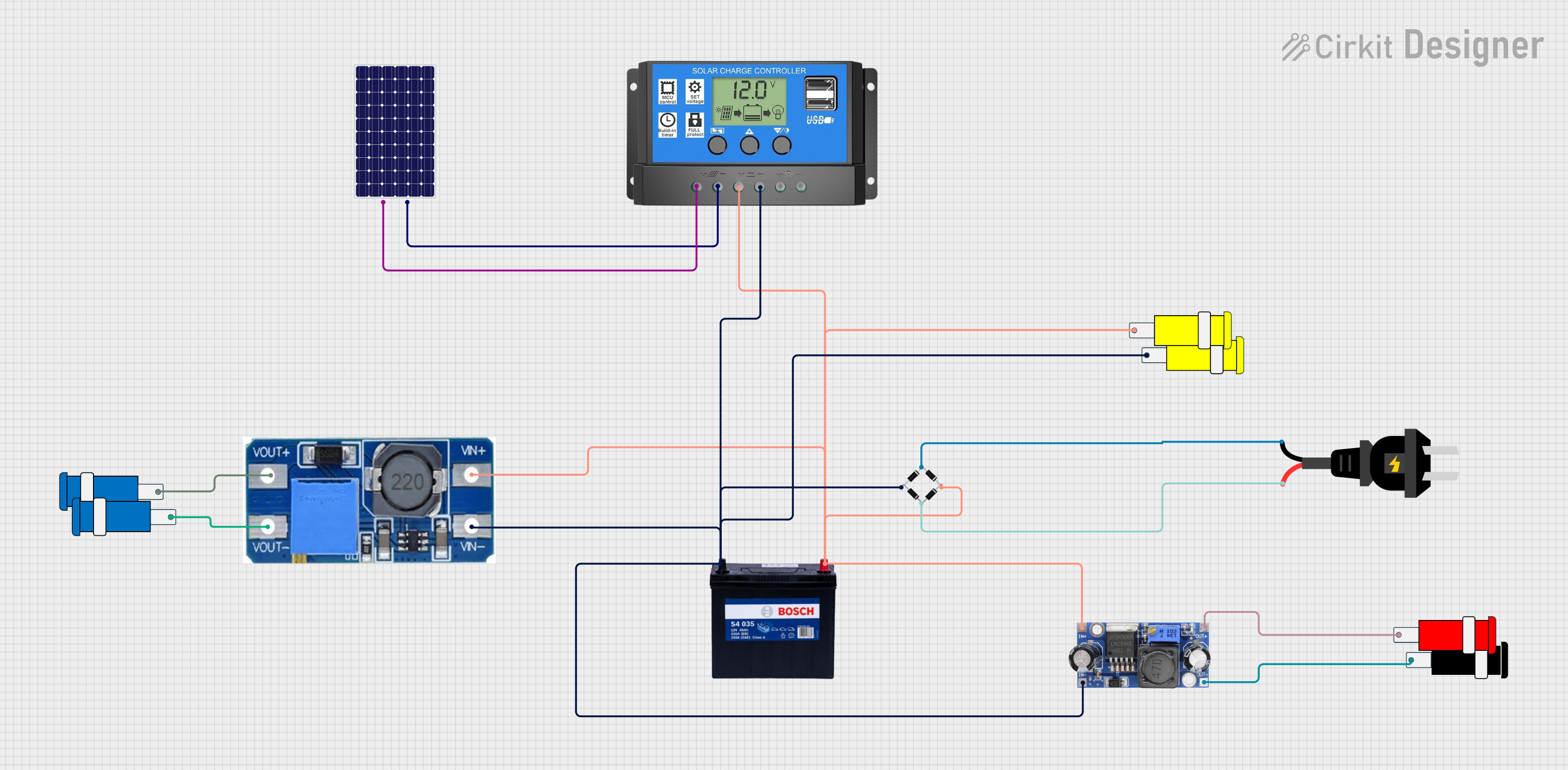
 Open Project in Cirkit Designer
Open Project in Cirkit Designer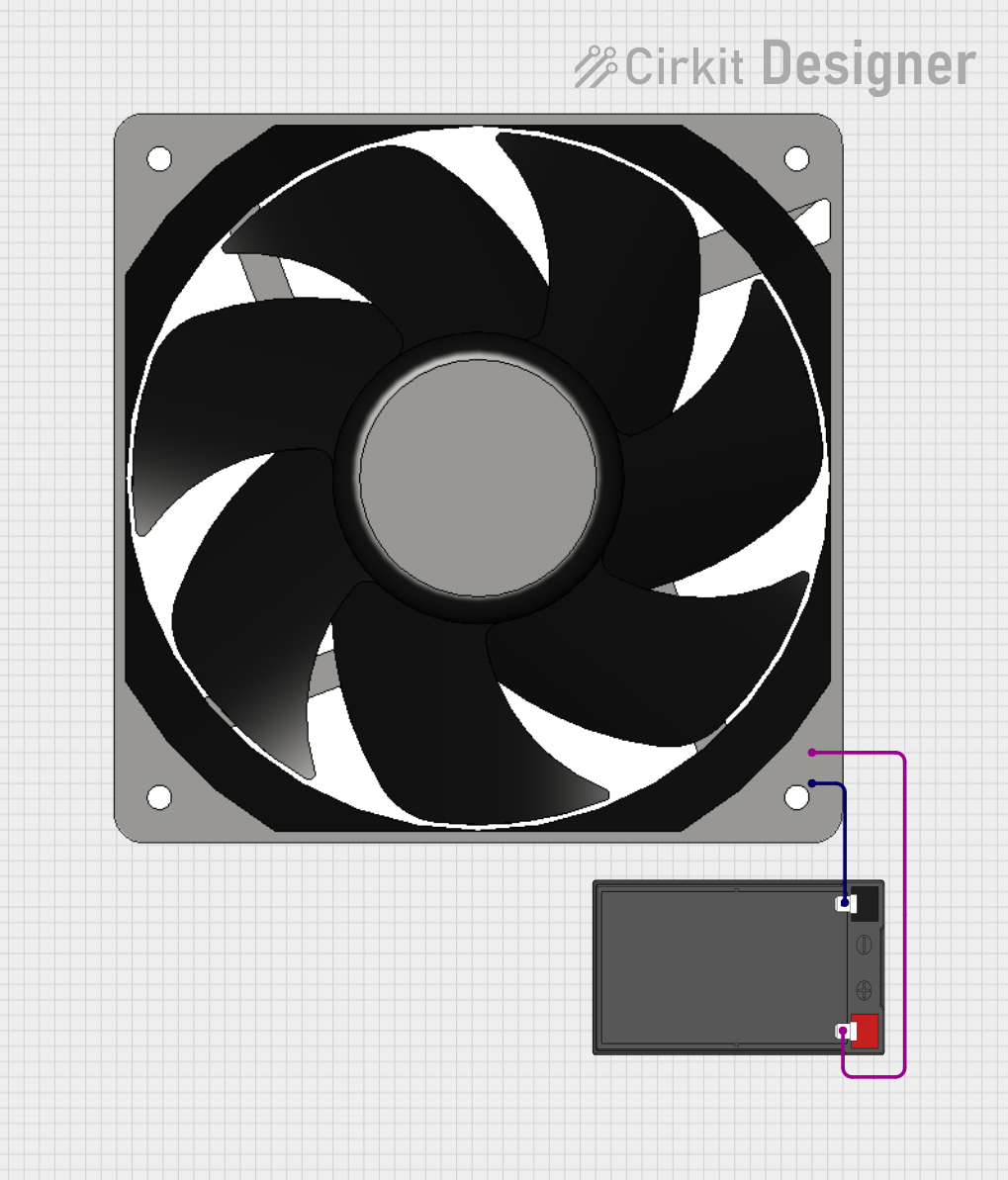
 Open Project in Cirkit Designer
Open Project in Cirkit Designer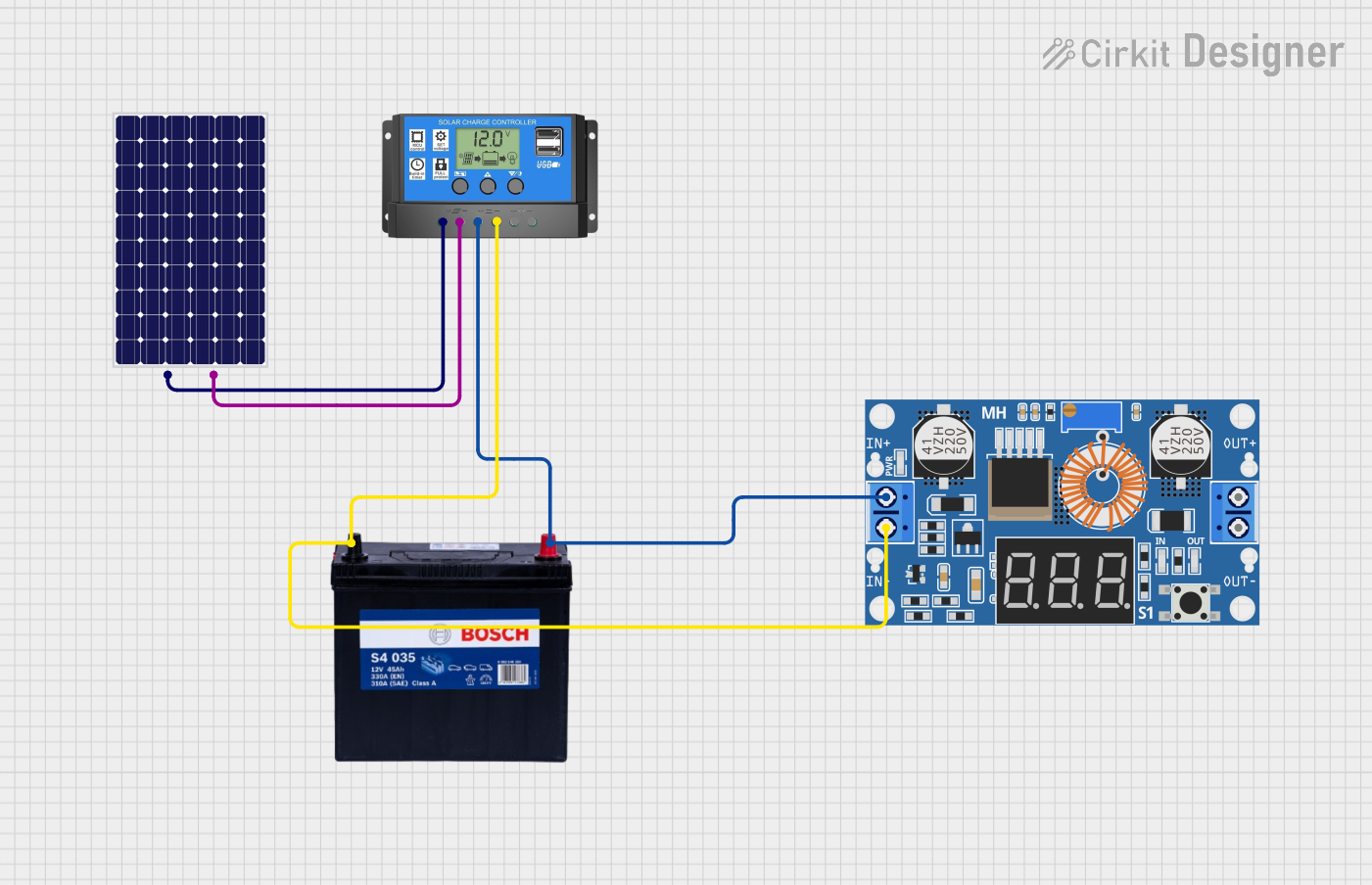
 Open Project in Cirkit Designer
Open Project in Cirkit Designer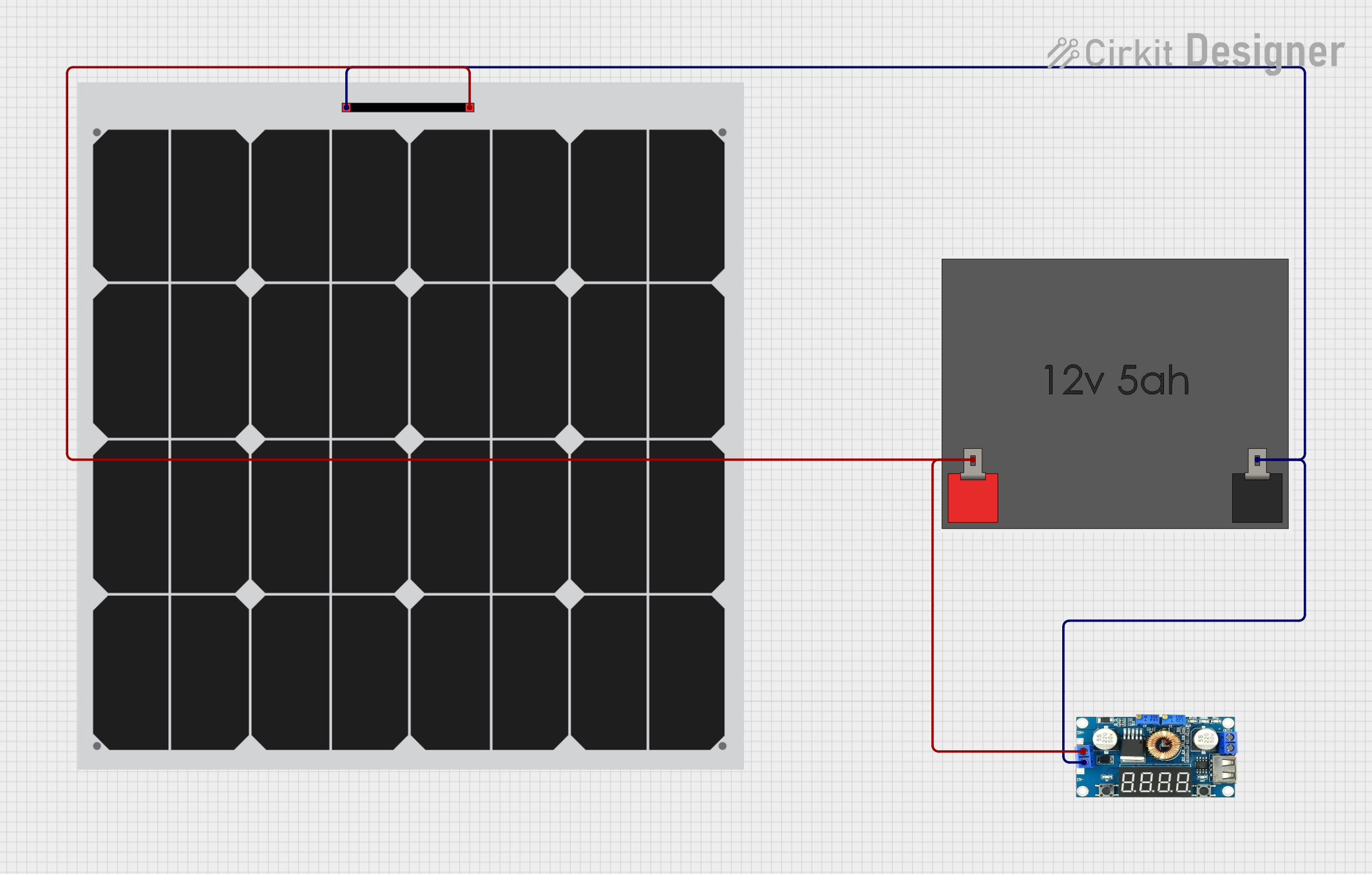
 Open Project in Cirkit Designer
Open Project in Cirkit DesignerExplore Projects Built with 12v5ah Battery

 Open Project in Cirkit Designer
Open Project in Cirkit Designer
 Open Project in Cirkit Designer
Open Project in Cirkit Designer
 Open Project in Cirkit Designer
Open Project in Cirkit Designer
 Open Project in Cirkit Designer
Open Project in Cirkit Designer